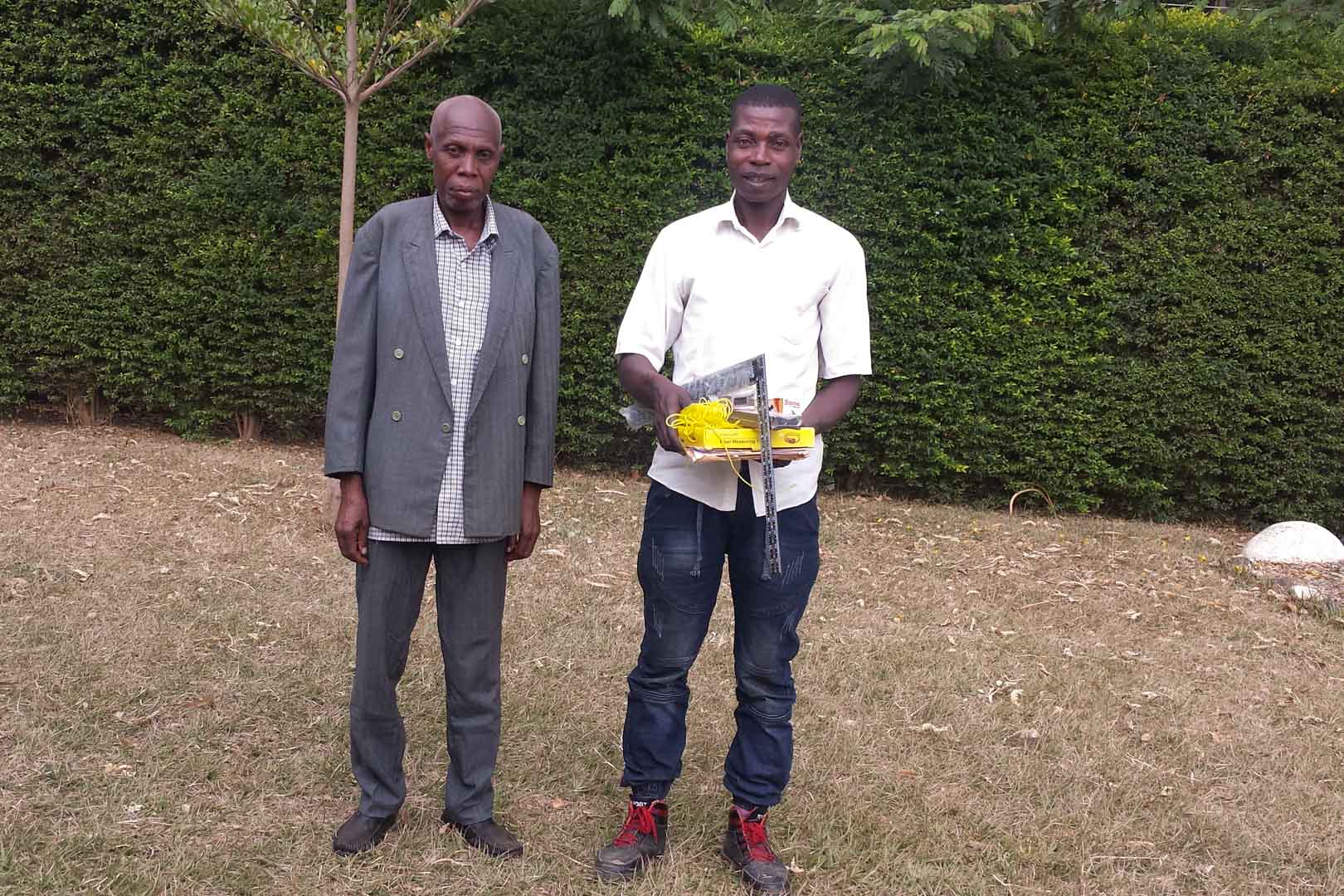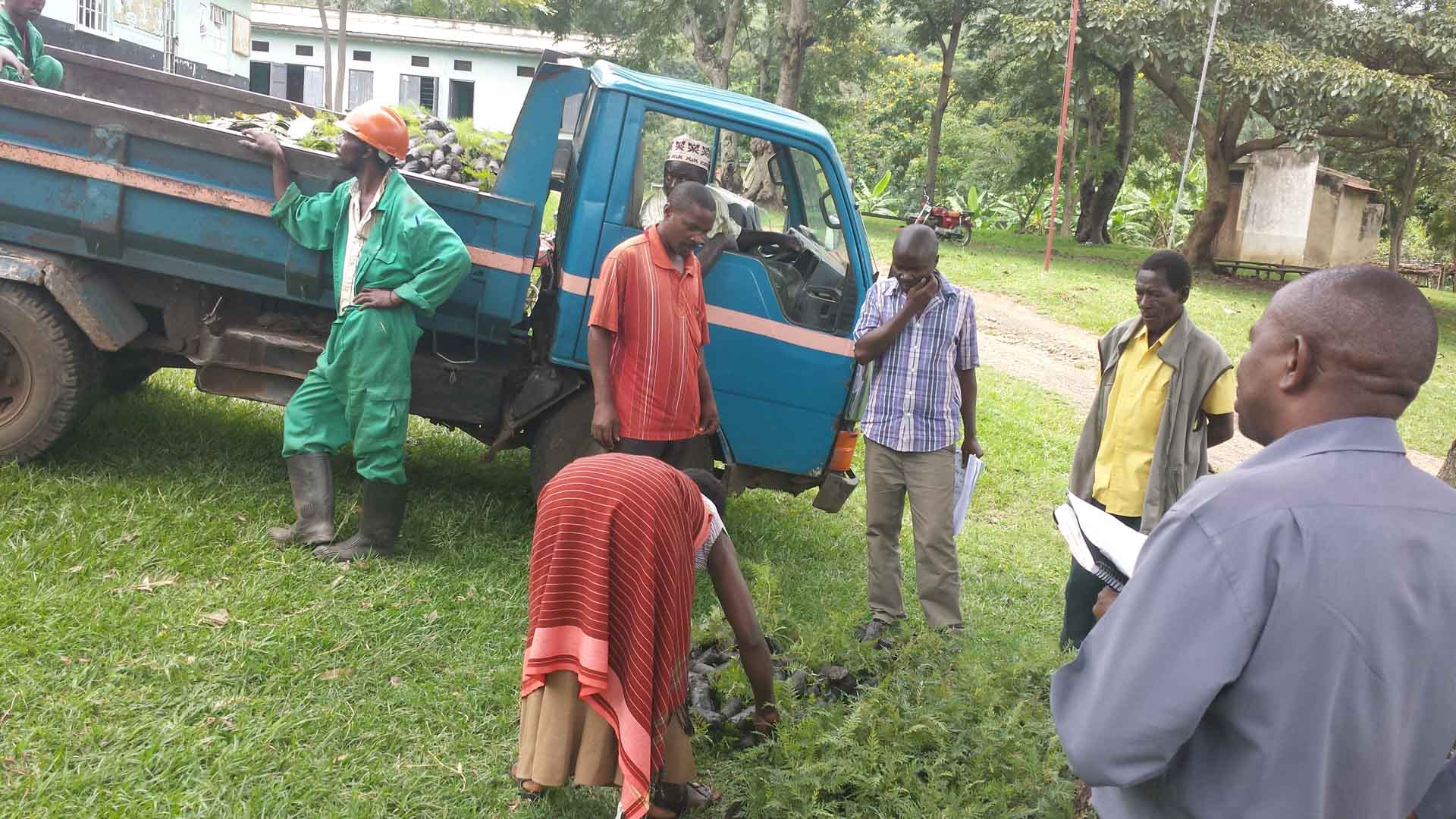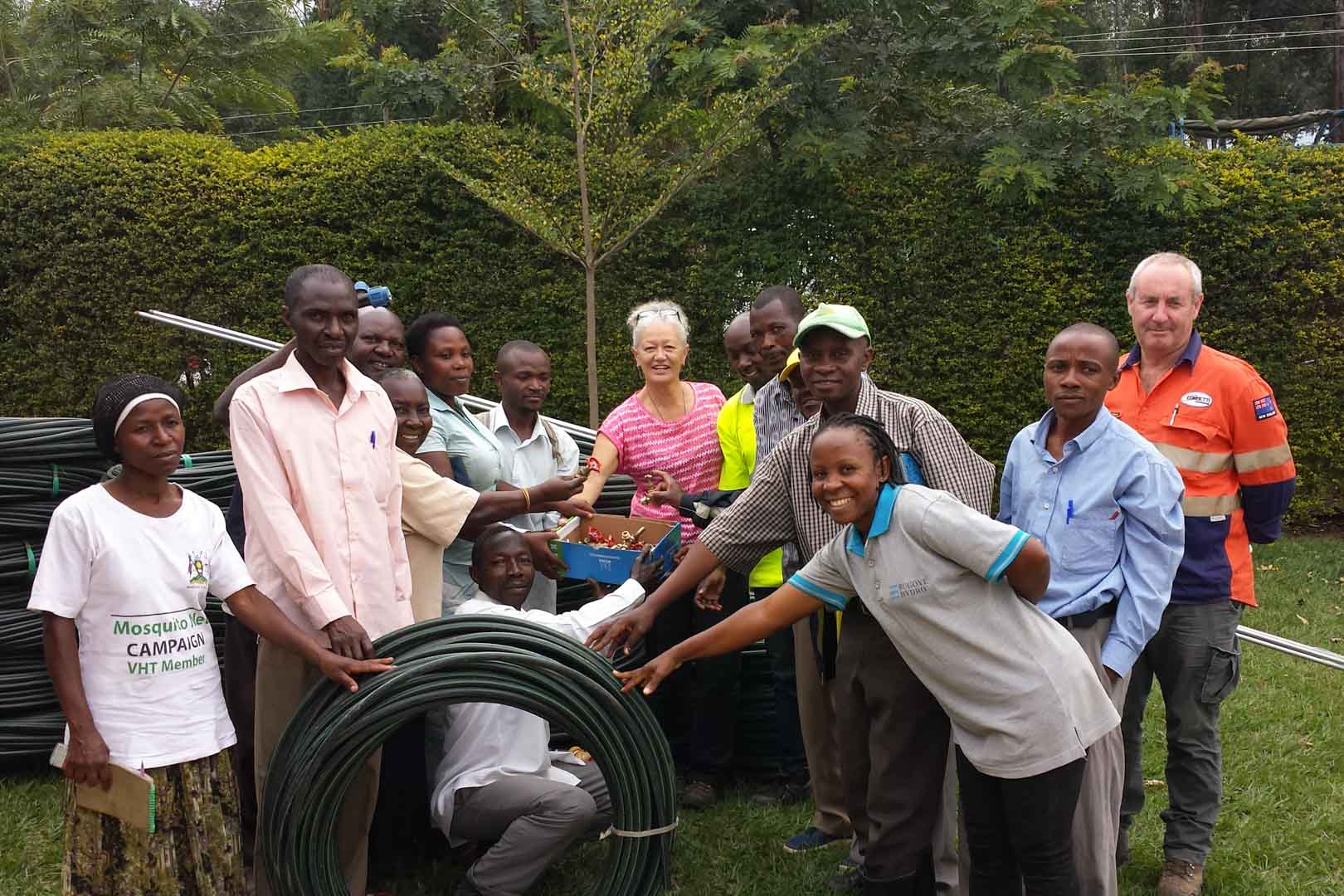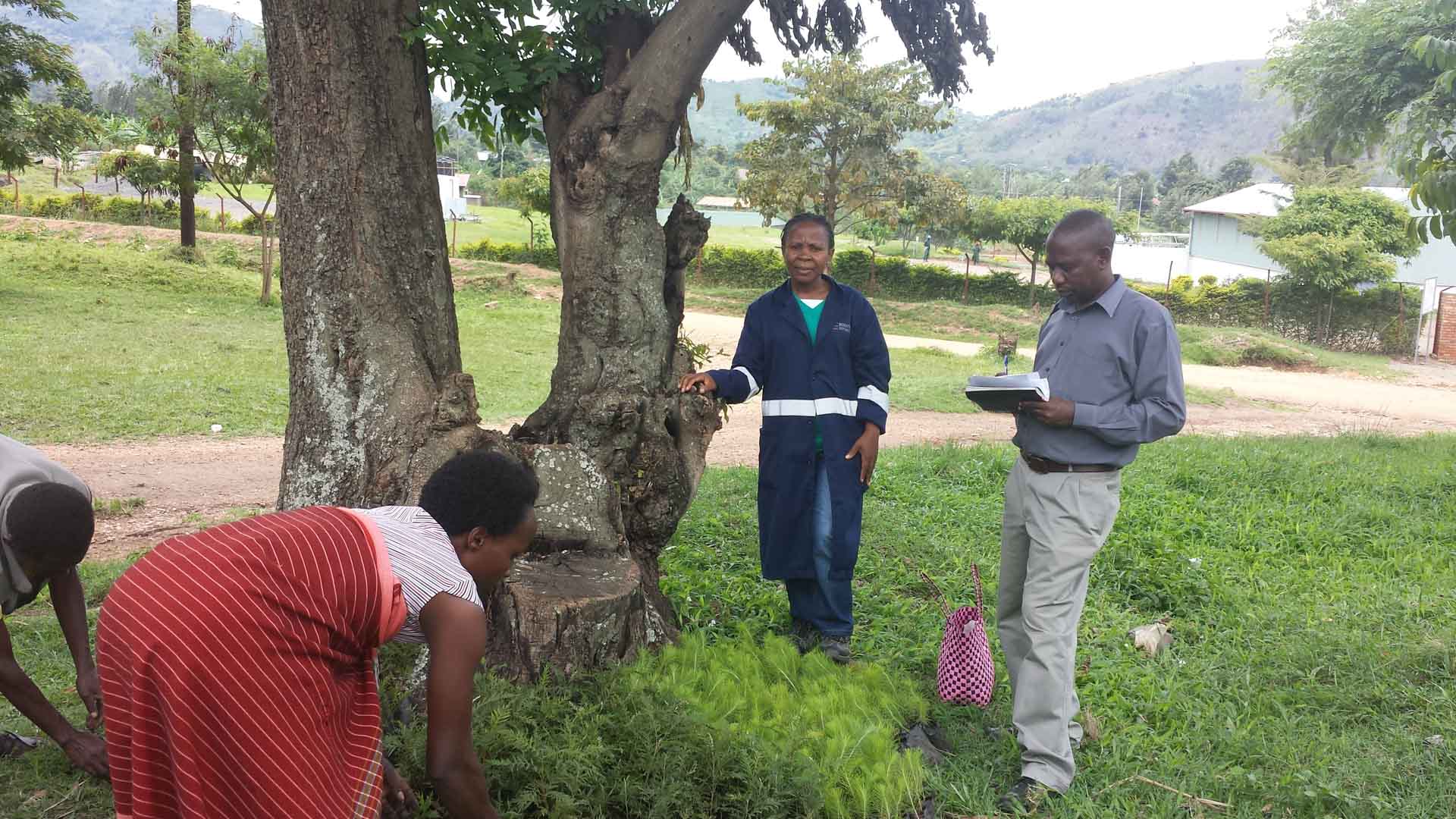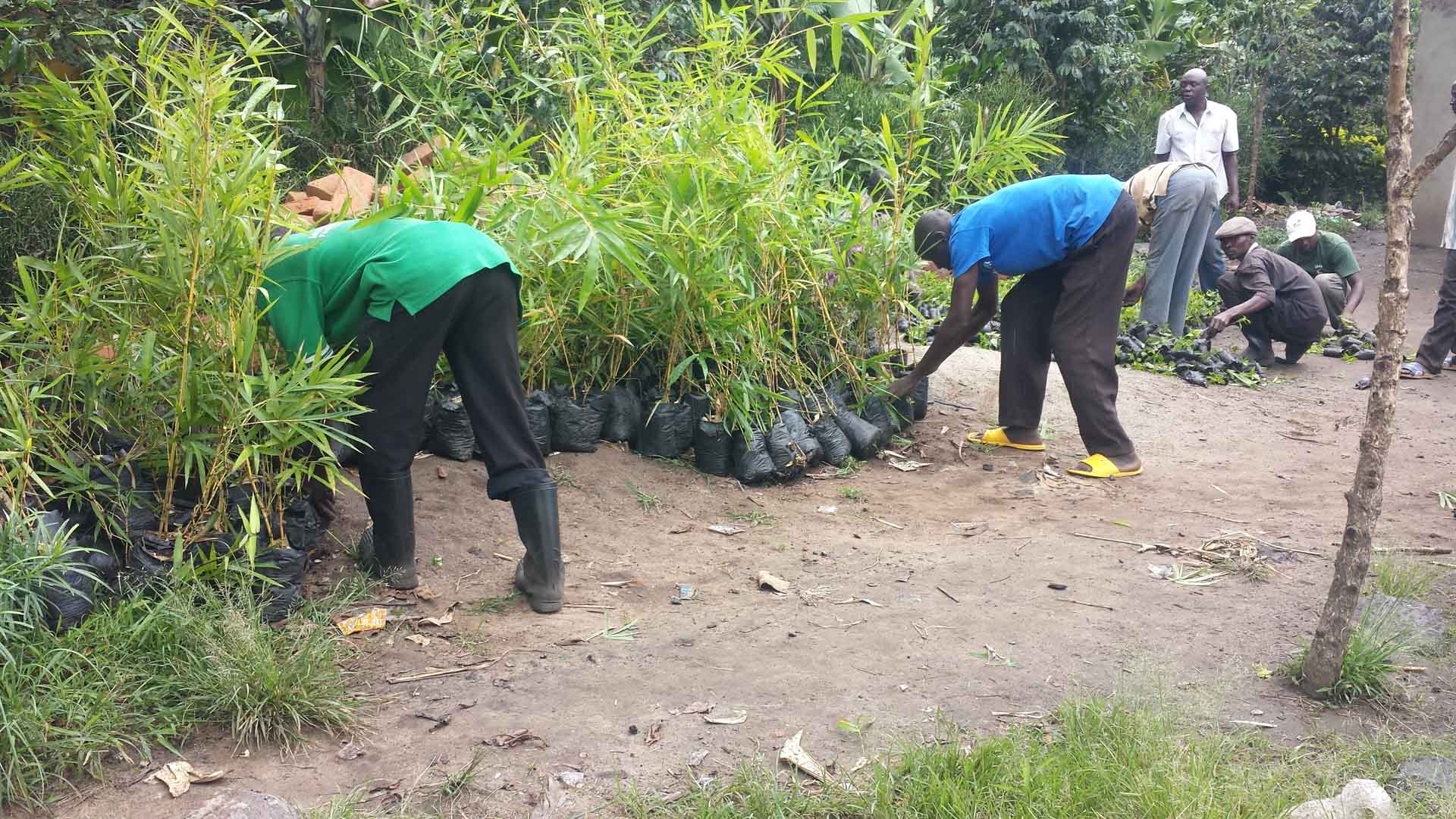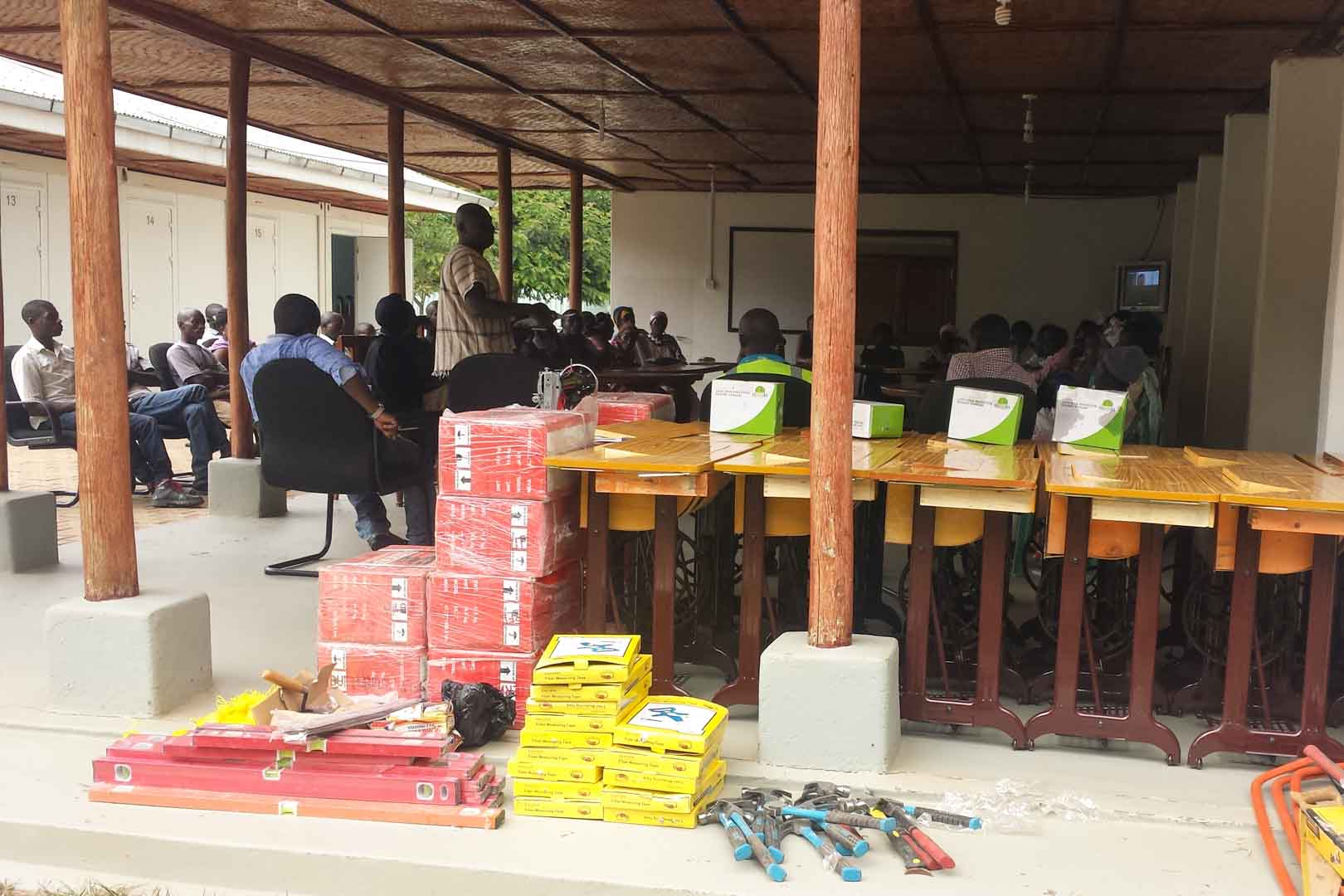Improving electricity supply and local livelihoods
The Bugoye hydropower project contributes to climate protection by increasing the share of electricity from clean sources in Uganda. The run-of-river plant with an installed capacity of 14.28 MW is located at the foot of the Rwenzori Mountains in the Kasese District. The project diverts water from the river Isya and runs it via a five kilometer canal into a 950 meter penstock with a head of 160 meters. After passing through two 7.228 MW Francis turbines, the water is discharged to the Mubuku River. The power plant has an average outcome of 82,000 MWh per year which will be delivered to the national grid via a 6 km long transmission line routed to the Nkenda substation.
This small, grid-connected hydropower plant contributes to improving energy security in the region and promotes the development of renewable energies in Uganda. The project also helps improve medical care, educational opportunities, and water supply for local people.

Hydropower plants use the energy of water to generate electricity. The energy is harnessed by passing water through a turbine. Under the pressure of the water, the turbine turns and transfers this energy to a generator, which converts kinetic energy into electricity. This principle applies to all types of hydroelectric power plants: from small run-of-river power plants to pumped-storage power plants on bodies of water like lakes. In many parts of the world, electricity is still primarily generated from fossil fuels. Clean hydropower can replace some of this emission-intensive energy and thus verifiably save carbon emissions. In most hydropower projects, the electricity is fed into a regional power grid, diversifying the energy supply and improving energy security in areas affected by power shortages and blackouts. Often, these projects also create jobs for the local population. Hydropower projects thus make an important contribution to clean energy supply as well as contributing to the UN Sustainable Development Goals (SDGs). Hydopower projects in the ClimatePartner portfolio are registered with international standards.
Explore our projects
Biochar for Climate Action, Healthy Soils, and Better Harvests

A certified climate project combined with additional commitment

Expansion of renewable energy generation in Asia

Ceramic water filters save CO2 and improve health

Improved cookstoves worldwide – for better health and cleaner air

A certified climate project combined with additional commitment

Powering access to renewable energy in Africa

A certified climate project combined with additional commitment

Restored ecosystems remove carbon

Turning degraded farmlands into healthy ecosystems

Improved cookstoves - better for health and the environment





